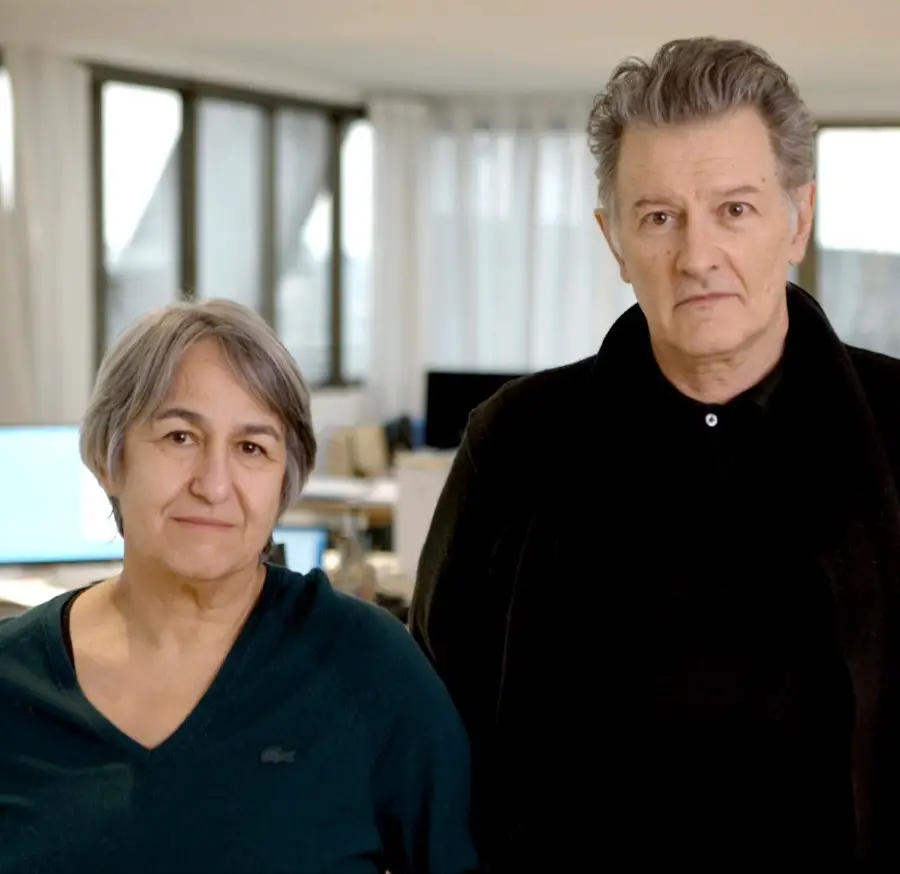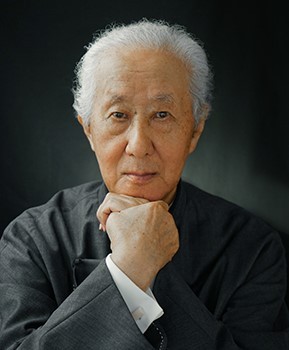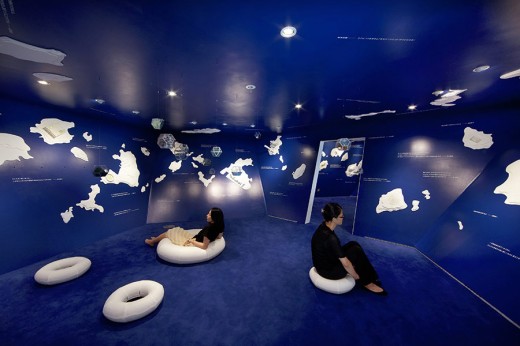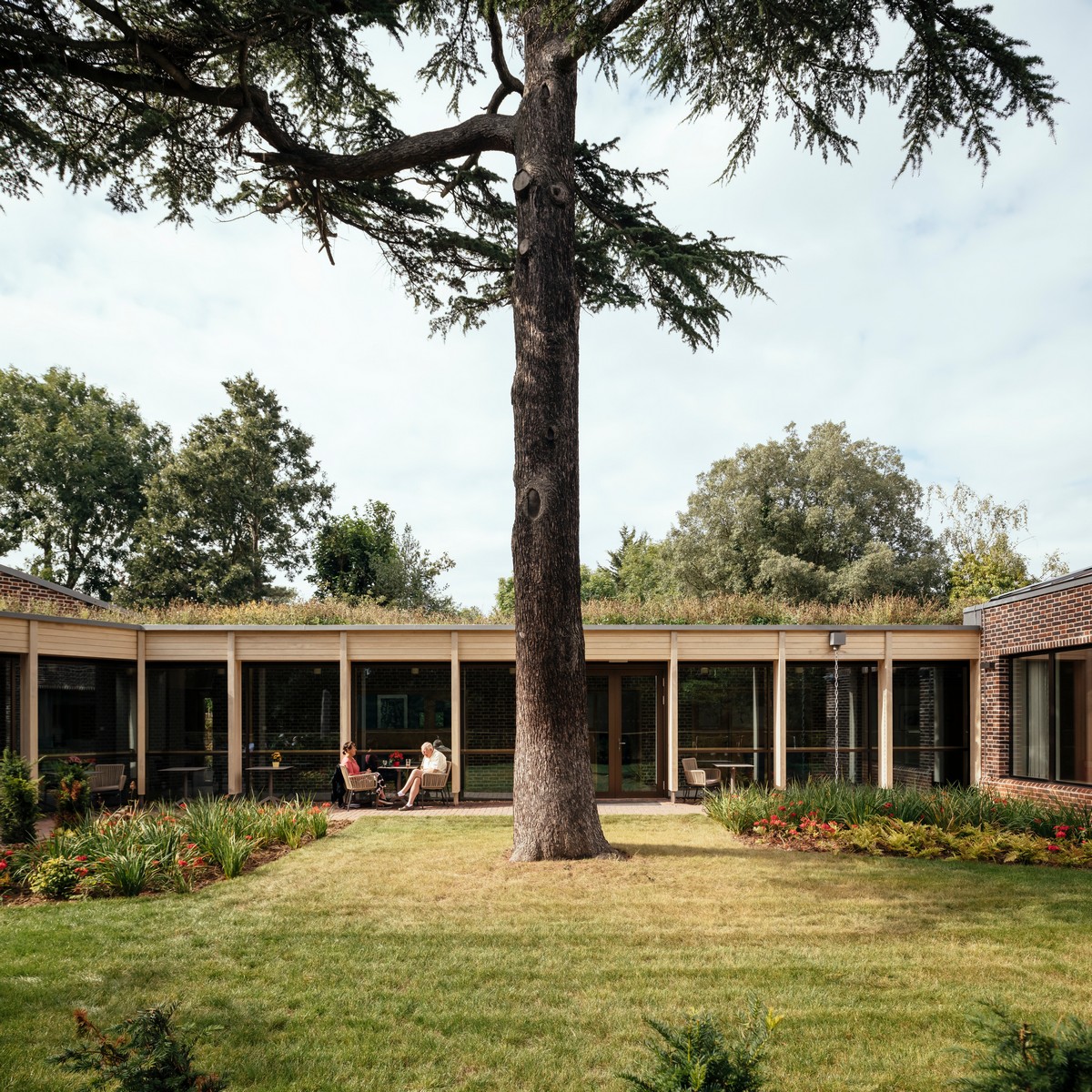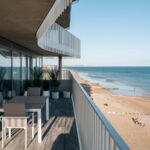Pritzker Architecture Prize 2021 Winner, Architects Laureates Awarded, Design News
Pritzker Architecture Prize 2021 Winner News
September 2, 2021
Pritzker Architecture Prize 2021 Ceremony
Announcing a Special 2021 Ceremony Video for the 2021 Pritzker Architecture Prize
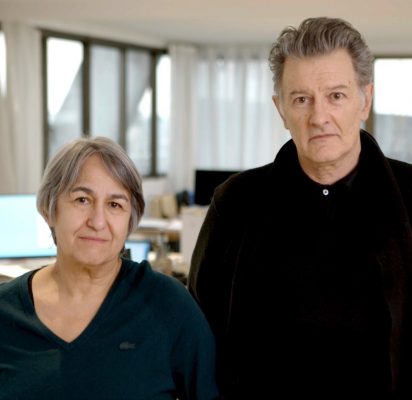
photo courtesy of The Hyatt Foundation
The Pritzker Architecture Prize announces a special ceremony video to honor 2021 Laureates, Anne Lacaton and Jean-Philippe Vassal, which will be released on Tuesday, September 14, 2021 at 10am EDT, viewable on the website pritzkerprize.com and social media channels.
“We are at a point in the history of architecture where the question of inhabiting becomes an essential subject. We do this by constructing the conditions for freedom through space, in a positive and open relationship with the climate, and by starting from the existing, without ever demolishing anything. This is the essence of our work,” expresses Vassal during his acceptance of the Pritzker Prize.
Lacaton follows, “Demolition has become a short-term solution, an easy decision as well as a mode of urban generation. It is even a means for recycling. Yet demolition is irreversible. Any demolition destroys a vast quantity of information, knowledge, layers, materials and memories. Life takes a long time to establish and to grow.”
Ceremony speakers filmed their remarks remotely, from locations around the world, offering landscapes from the Andes Mountains to the Rockies, from cities to seas, and from private and public spaces spanning Asia, Europe, and North and South Americas. Viewers will travel to built works by Lacaton and Vassal, from the rooftop of Frac Grand Large—Hauts-de-France (Dunkerque, France), a waterfront building featuring galleries for contemporary art, public installations and regional programming that underscores the architects’ commitment to “never demolish”; to Palais de Tokyo (Paris, France), which became the largest center of contemporary art in Europe, upon the 2012 transformation by the architects that maximized functionality and redeemed the pre-existing.
“Much of their built work calls us to be alert to the time in which we are living. It is to the peripheral and the marginal that we are called to serve. Lacaton and Vassal are surely amongst our most distinguished guides, devoted as they have been for many decades to the welfare and emotional well-being of those for whom they create housing with compassion and aesthetic beauty” says Tom Pritzker, Chair of Hyatt Foundation, which sponsors the award.
“Such unpretentious architectural language may be the reason why their buildings encourage unexpected instead of predefined functions,” comments Alejandro Aravena, Jury Chair. “To be humble does not mean to be shy. Actually, a rather bold and self-confident character is required for subtle operations. And this may be one of the most delicate balances that Lacaton and Vassal’s architecture has been able to achieve – their careful yet straightforward approach to the built environment.”
Jurors Barry Bergdoll, a Meyer Schapiro Professor of Art History and Archaeology at Columbia University, curator and author, New York, United States; Deborah Berke, architect and Dean of Yale School of Architecture, New York, United States; Stephen Breyer, U.S. Supreme Court Justice, Washington, D.C.; André Corrêa do Lago, architectural critic, curator, and Brazilian Ambassador to India, Delhi; Kazuyo Sejima, architect, educator and 2010 Pritzker Laureate, Tokyo, Japan; Benedetta Tagliabue, architect, Barcelona, Spain; and Wang Shu, architect, educator, and 2012 Pritzker Laureate, Hangzhou, China, lend their insights into this year’s selection.
From the Fort of Bregançon, a presidential residence located in the south of France in the Var department of the Provence-Alpes-Côte d’Azur region, Emmanuel Macron, President of the French Republic, addresses the Laureates, “Each time, you have bet on openness. You have breathed life into your spaces, making them altruistic, bright, delicate. You remind us, as if it were necessary, that architecture will always be a political form of art, a social art that designs the way we live, that invents or reinvents a certain way of using the world, that reinvents the way we live in places, the way we move, the way we create society…”
2020 Laureates, Shelley McNamara and Yvonne Farrell, deliver a special tribute from the reading room of the Irish Architectural Archive, founded in 1976 to preserve the largest body of native and historic architectural books, drawings and photographs, housed in a Georgian era building. “It is important for the world to know that people like you exist. It’s important for us,” states Farrell. “It is your philosophical position, your highly intelligent understanding of situations, your seemingly modest solutions, that make you leaders. Your architectural strategies are both delicate and robust, which help us see solutions that are inventive, that lead to renewed ways of thinking, to renewed ways of making.”
Available to the public, this video marks the second pre-filmed ceremony in the 43-year history of the Prize, following the 2020 ceremony. Previously, ceremonies have been held in-person throughout sixteen countries on four continents, spanning North and South America to Europe to the Middle East to Far East Asia, at architecturally and historically significant venues throughout the world including UNESCO World Heritage sites, palaces, Heads of State residences and unfinished or new buildings. Each location pays homage to the architecture of other eras and/or works by previous Laureates of the Prize.
Anne Lacaton and Jean-Philippe Vassal are the 49th and 50th Laureates of the Pritzker Architecture Prize.
Previously on e-architect:
Mar 17 + 16, 2021
Pritzker Architecture Prize 2021 Announcement
Anne Lacaton and Jean-Philippe Vassal Receive the 2021 Pritzker Architecture Prize
Anne Lacaton and Jean-Philippe Vassal, of France, have been selected as the 2021 Pritzker Architecture Prize Laureates, announced Tom Pritzker, Chairman of The Hyatt Foundation, which sponsors the award that is known internationally as architecture’s highest honor.
“Good architecture is open—open to life, open to enhance the freedom of anyone, where anyone can do what they need to do,” says Lacaton. “It should not be demonstrative or imposing, but it must be something familiar, useful and beautiful, with the ability to quietly support the life that will take place within it.”
“Not only have they defined an architectural approach that renews the legacy of modernism, but they have also proposed an adjusted definition of the very profession of architecture. The modernist hopes and dreams to improve the lives of many are reinvigorated through their work that responds to the climatic and ecological emergencies of our time, as well as social urgencies, particularly in the realm of urban housing. They accomplish this through a powerful sense of space and materials that creates architecture as strong in its forms as in its convictions, as transparent in its aesthetic as in its ethics,” states the 2021 Jury Citation, in part.
The architects increase living space exponentially and inexpensively, through winter gardens and balconies that enable inhabitants to conserve energy and access nature during all seasons. Latapie House (Floirac, France 1993) was their initial application of greenhouse technologies to install a winter garden that allowed a larger residence for a modest budget. The east-facing retractable and transparent polycarbonate panels on the back side of the home allow natural light to illuminate the entire dwelling, enlarging its indoor communal spaces from the living room to the kitchen, and enabling ease of climate control.
Site for Contemporary Creation, Phase 2, Palais de Tokyo:
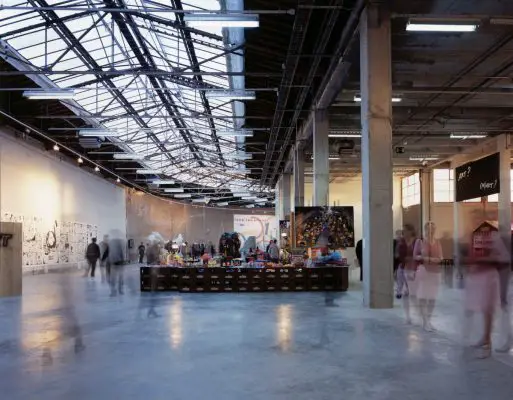
photo courtesy of Philippe Ruault
“This year, more than ever, we have felt that we are part of humankind as a whole. Be it for health, political or social reasons, there is a need to build a sense of collectiveness. Like in any interconnected system, being fair to the environment, being fair to humanity, is being fair to the next generation,” comments Alejandro Aravena, Chair of the Pritzker Architecture Prize Jury. “Lacaton and Vassal are radical in their delicacy and bold through their subtleness, balancing a respectful yet straightforward approach to the built environment.”
On a grander scale, Lacaton and Vassal, alongside Frédéric Druot, transformed La Tour Bois le Prêtre (Paris, France 2011), a 17-story, 96-unit city housing project originally built in the early 1960s.
Latapie House, Floirac, France, 1993:
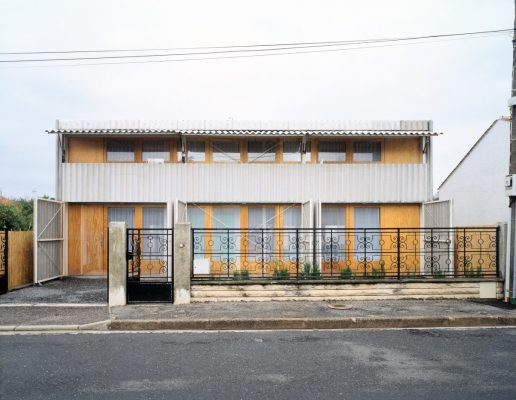
photo courtesy of Philippe Ruault
The architects increased the interior square footage of every unit through the removal of the original concrete façade, and extended the footprint of the building to form bioclimatic balconies. Once-constrained living rooms now extend into new terraces as flexible space, featuring large windows for unrestricted views of the city, thus reimagining not only the aesthetic of social housing, but also the intention and possibilities of such communities within the urban geography. This framework was similarly applied to the transformation of three buildings (G, H and I), consisting of 530 apartments, at Grand Parc (Bordeaux, France 2017), with Druot and Christophe Hutin. The transformation resulted in a dramatic visual reinvention of the social housing complex, the modernization of elevators and plumbing, and the generous expansion of all units, some nearly doubling in size, without the displacement of any residents and for one third of the cost of demolishing and building new.
“Our work is about solving constraints and problems, and finding spaces that can create uses, emotions and feelings. At the end of this process and all of this effort, there must be lightness and simplicity, when all that has been before was so complex,” explains Vassal.
The architects rebalance dormant or inefficient rooms to yield open spaces that accommodate greater movement and changing needs, thus lengthening the longevity of the buildings. Their most recent transformation of Palais de Tokyo (Paris, France 2012), after a restoration of the space more than a decade earlier, increased the museum by 20,000 square meters, in part by creating new underground space, and assuring that every area of the building is reserved for the user experience. Retreating from white cube galleries and guided pathways that are characteristic of many contemporary art museums, the architects instead created voluminous, unfinished spaces. These spaces allow artists and curators to create boundless exhibitions for all mediums of art within a range of physical environments, from dark and cavernous to transparent and sunlit, that encourage visitors to linger.
Lacaton insists, “Transformation is the opportunity of doing more and better with what is already existing. The demolishing is a decision of easiness and short term. It is a waste of many things—a waste of energy, a waste of material, and a waste of history. Moreover, it has a very negative social impact. For us, it is an act of violence.”
Site for Contemporary Creation, Phase 2, Palais de Tokyo:
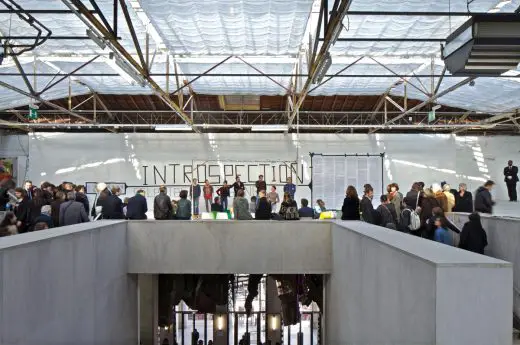
photo courtesy of Philippe Ruault
Adhering to a precept of “never demolish”, Lacaton and Vassal undertake restrained interventions to upgrade dated infrastructure while allowing enduring properties of a building to remain. Rather than filling and losing the impressive void of the Atelier de Préfabrication no. 2 (AP2), a postwar shipbuilding facility at the shoreline of a waterfront redevelopment project, the architects chose to erect a second building, identical in shape and size to the first. They used transparent, prefabricated materials, resulting in unhindered views through the new to the old. The original landmark, designated for public programming, and the newer structure, FRAC Nord-Pas de Calais (Dunkerque, France 2013), housing galleries, offices and storage for the regional collections of contemporary art, can function independently or collaboratively. They are connected by an internal street located in the void between the two structures.
Much of their work encompasses new buildings, and the École Nationale Supérieure d’Architecture de Nantes (Nantes, France 2009) exemplifies the significance of freedom of use. To accommodate the range of pedagogies necessary for its growing student body, the plot was maximized and the architects were able to almost double the space outlined in the brief and do so within budget. Located at the bank of the Loire River, this large-scale, double-height, three-story building features a concrete and steel frame encased in retractable polycarbonate walls and sliding doors.
Latapie House, Floirac, France, 1993:
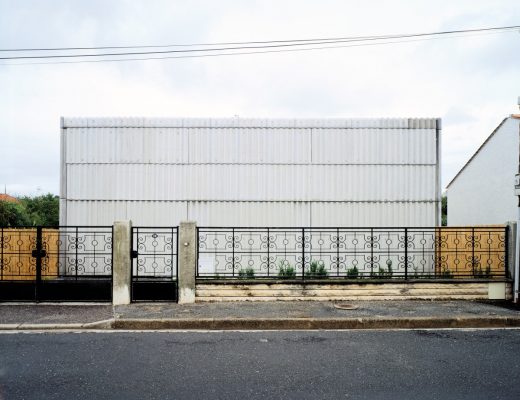
photo courtesy of Philippe Ruault
Areas of various sizes exist throughout, and all spaces are deliberately unprescribed and adaptable. An auditorium can open to extend into the street, and high ceilings create generous spaces necessary for construction workshops. Even the wide, sloping ramp that connects the ground to the 2,000 square meter functional rooftop is intended as a flexible learning and gathering space.
“Anne Lacaton and Jean-Philippe Vassal have always understood that architecture lends its capacity to build a community for all of society,” remarks Pritzker. “Their aim to serve human life through their work, demonstration of strength in modesty, and cultivation of a dialogue between old and new, broadens the field of architecture.”
Significant works also include Cap Ferret House (Cap Ferret, France 1998), 14 social houses for Cité Manifeste (Mulhouse, France 2005); Pôle Universitaire de Sciences de Gestion (Bordeaux, France 2008); low-rise apartments for 53 units (Saint-Nazaire, France 2011), a multipurpose theater (Lille, 2013), Ourcq-Jaurès student and social housing (Paris, France 2013); a 59-unit social housing development at Jardins Neppert (Mulhouse, France 2014–2015); and a residential and office building in Chêne-Bourg (Geneva, Switzerland 2020).
They established their practice, Lacaton & Vassal, in Paris in 1987, and have completed over 30 projects throughout Europe and West Africa. Lacaton and Vassal are the 49th and 50th Laureates of the Pritzker Architecture Prize.
129 Units, Ourcq-Juarès Student and Social Housing, France:
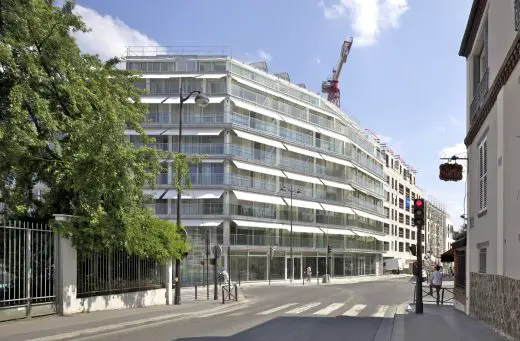
photo courtesy of Philippe Ruault
Pritzker Architecture Prize 2021 Winner image / information received 160321
Previous Laureates
Yvonne Farrell and Shelley McNamara, 2020 Laureates
Ireland
Presented virtually
Arata Isozaki, 2019 Laureate
Japan
Presented at the Château de Versailles, Versailles, France
Balkrishna Doshi, 2018 Laureate
India
Presented at the Aga Khan Museum, Toronto, Canada
Rafael Aranda, Carme Pigem and Ramon Vilalta, 2017 Laureates
Spain
Presented at the State Guest House, Akasaka Palace, Tokyo, Japan
Alejandro Aravena, 2016 Laureate
Chile
Presented at the United Nations Headquarters, New York, New York
Frei Otto, 2015 Laureate
Germany
Presented at the New World Center, Miami Beach, Florida
Shigeru Ban, 2014 Laureate
Japan
Presented at the Rijksmuseum, Amsterdam, The Netherlands
Toyo Ito, 2013 Laureate
Japan
Presented at the John F. Kennedy Presidential Library and Museum, Boston, Massachusetts
Wang Shu, 2012 Laureate
The People’s Republic of China
Presented at the Great Hall of the People, Beijing, The People’s Republic of China
Eduardo Souto de Moura, 2011 Laureate
Portugal
Presented at the Andrew W. Mellon Auditorium, Washington, DC
Kazuyo Sejima and Ryue Nishizawa, 2010 Laureates
Japan
Presented at the Immigration Museum, Ellis Island, New York Bay
Peter Zumthor, 2009 Laureate
Switzerland
Presented at the Palace of the Buenos Aires City Legislature, Buenos Aires, Argentina
Jean Nouvel, 2008 Laureate
France
Presented at the Library of Congress, Washington, DC
Richard Rogers, 2007 Laureate
United Kingdom
Presented at the Banqueting House, Whitehall Palace, London, United Kingdom
Paulo Mendes da Rocha, 2006 Laureate
Brazil
Presented at the Dolmabahçe Palace, Istanbul, Turkey
Thom Mayne, 2005 Laureate
United States of America
Presented at the Jay Pritzker Pavilion, Millennium Park, Chicago, Illinois
Zaha Hadid, 2004 Laureate
United Kingdom
Presented at the State Hermitage Museum, St. Petersburg, Russia
Jørn Utzon, 2003 Laureate
Denmark
Presented at Royal Academy of Fine Arts of San Fernando, Madrid, Spain
Glenn Murcutt, 2002 Laureate
Australia
Presented at Michelangelo’s Campidoglio in Rome, Italy
Jacques Herzog and Pierre de Meuron, 2001 Laureates
Switzerland
Presented at Thomas Jefferson’s Monticello in Charlottesville, Virginia
Rem Koolhaas, 2000 Laureate
Netherlands
Presented at the Jerusalem Archaeological Park, Israel
Norman Foster, 1999 Laureate
United Kingdom
Presented at the Altes Museum, Berlin, Germany
Renzo Piano, 1998 Laureate
Italy
Presented at the White House, Washington, DC
Sverre Fehn, 1997 Laureate
Norway
Presented at the construction site of the Guggenheim Museum, Bilbao, Spain
Rafael Moneo, 1996 Laureate
Spain
Presented at the construction site of the Getty Center, Los Angeles, California
Tadao Ando, 1995 Laureate
Japan
Presented at the Grand Trianon and the Palace of Versailles, France
Christian de Portzamparc, 1994 Laureate
France
Presented at The Commons, Columbus, Indiana
Fumihiko Maki, 1993 Laureate
Japan
Presented at Prague Castle, Czech Republic
Alvaro Siza, 1992 Laureate
Portugal
Presented at the Harold Washington Library Center, Chicago, Illinois
Robert Venturi, 1991 Laureate
United States of America
Presented at Palacio de Iturbide, Mexico City, Mexico
Aldo Rossi, 1990 Laureate
Italy
Presented at Palazzo Grassi, Venice, Italy
Frank O. Gehry, 1989 Laureate
United States of America
Presented at Todai-ji Buddhist Temple, Nara, Japan
Oscar Niemeyer, 1988 Laureate
Brazil
Presented at the Art Institute of Chicago, Illinois
Gordon Bunshaft, 1988 Laureate
United States of America
Presented at the Art Institute of Chicago, Illinois
Kenzo Tange, 1987 Laureate
Japan
Presented at the Kimbell Art Museum, Fort Worth, Texas
Gottfried Böhm, 1986 Laureate
Germany
Presented at Goldsmiths’ Hall, London, United Kingdom
Hans Hollein, 1985 Laureate
Austria
Presented at the Huntington Library, Art Collections and Botanical Gardens, San Marino, California
Richard Meier, 1984 Laureate
United States of America
Presented at the National Gallery of Art, Washington, DC
Ieoh Ming Pei, 1983 Laureate
United States of America
Presented at The Metropolitan Museum of Art, New York, New York
Kevin Roche, 1982 Laureate
United States of America
Presented at the Art Institute of Chicago, Illinois
James Stirling, 1981 Laureate
United Kingdom
Presented at the National Building Museum, Washington, DC
Luis Barragán, 1980 Laureate
Mexico
Presented at Dumbarton Oaks, Washington, DC
Philip Johnson, 1979 Laureate
United States of America
Presented at Dumbarton Oaks, Washington, DC
About the Medal
The bronze medallion awarded to each Laureate of the Pritzker Architecture Prize is based on designs
of Louis Sullivan, famed Chicago architect generally acknowledged as the father of the skyscraper. On
one side is the name of the prize. On the reverse, three words are inscribed, “firmness, commodity and
delight.” These are the three conditions referred to by Henry Wotton in his 1624 treatise, The Elements
of Architecture, which was a translation of thoughts originally set down nearly 2,000 years ago by
Marcus Vitruvius in his Ten Books on Architecture, dedicated to the Roman Emperor Augustus. Wotton,
who did the translation when he was England’s first ambassador to Venice, used the complete quote
as: “The end is to build well. Well-building hath three conditions: commodity, firmness and delight.”
History of the Prize
The Pritzker Architecture Prize was established by The Hyatt Foundation in 1979 to annually honor a
living architect whose built work demonstrates a combination of those qualities of talent, vision and
commitment, which has produced consistent and significant contributions to humanity and the built
environment through the art of architecture. It has often been described as “architecture’s most
prestigious award” or as “the Nobel of architecture.”
The prize takes its name from the Pritzker family, whose international business interests, which include
the Hyatt Hotels, are headquartered in Chicago. They have long been known for their support of
educational, social welfare, scientific, medical and cultural activities. Jay A. Pritzker, who founded the
prize with his wife, Cindy, died on January 23, 1999. His eldest son, Thomas J. Pritzker, has become
chairman of The Hyatt Foundation. In 2004, Chicago celebrated the opening of Millennium Park, in
which a music pavilion designed by Pritzker Laureate Frank Gehry was dedicated and named for the
founder of the prize. It was in the Jay Pritzker Pavilion that the 2005 awarding ceremony took place.
Tom Pritzker explains, “As native Chicagoans, it’s not surprising that we are keenly aware of architecture,
living in the birthplace of the skyscraper, a city filled with buildings designed by architectural legends
such as Louis Sullivan, Frank Lloyd Wright, Mies van der Rohe and many others.”
He continues, “In 1967, our company acquired an unfinished building which was to become the Hyatt
Regency Atlanta. Its soaring atrium was wildly successful and became the signature piece of our
hotels around the world. It was immediately apparent that this design had a pronounced effect on
the mood of our guests and attitude of our employees. While the architecture of Chicago made us
cognizant of the art of architecture, our work with designing and building hotels made us aware of
the impact architecture could have on human behavior.”
And he elaborates further, “So in 1978, when the family was approached with the idea of honoring
living architects, we were responsive. Mom and Dad (Cindy and the late Jay A. Pritzker) believed that a
meaningful prize would encourage and stimulate not only a greater public awareness of buildings, but
also would inspire greater creativity within the architectural profession.” He went on to add that he is
extremely proud to carry on that effort on behalf of his family.
Many of the procedures and rewards of the Pritzker Prize are modeled after the Nobel Prize.
Laureates of the Pritzker Architecture Prize receive a $100,000 grant, a formal citation certificate,
and since 1987, a bronze medal. Prior to that year, a limited edition Henry Moore sculpture was
presented to each Laureate.
Nominations are accepted from all nations; from government officials, writers, critics, academicians,
fellow architects, architectural societies or industrialists, virtually anyone who might have an interest
in advancing great architecture. The prize is awarded irrespective of nationality, race, creed, gender
or ideology.
The nominating procedure is continuous from year to year, closing each November. Nominations
received after the closing are automatically considered in the following calendar year. The final
selection is made by an international jury through undisclosed deliberations and voting.
The Evolution of the Jury
The first jury, assembled in 1979, consisted of the late J. Carter Brown, then director of the National
Gallery of Art in Washington, DC; the late J. Irwin Miller, then chairman of the executive and finance
committees of Cummins Engine Company; the late César Pelli, architect and at the time, dean of
the Yale University School of Architecture; Arata Isozaki, architect from Japan and 2019 Pritzker Prize
Laureate; and the late Kenneth Clark (Lord Clark of Saltwood), noted English author and art historian.
Jury members are invited to serve for a minimum three-year tenure. The gradual changes over time
in the jury composition allow for a balance between stability and new perspectives on the committee.
Lord Rothschild of the UK was Chair of the Pritzker Prize Jury from 2002–2004. Lord Peter Palumbo,
well-known architectural patron and former chairman of the Arts Council of Great Britain, former
trustee of the Mies van der Rohe Archives of the Museum of Modern Art in New York, and former
chairman of the trustees, Serpentine Galleries, served as Chair from 2005–2016 and continued as a
member through 2018. 2002 Pritzker Prize Laureate Glenn Murcutt joined the jury in 2011 and held
the Chair position from 2017–2018. U.S. Supreme Court Justice Stephen Breyer joined the jury in
2012, was appointed Chair from 2019–2020, and presently remains a member of the jury.
Jury members are assembled from around the world and reflect a variety of professions and points
of view. The current Jury Chair is Alejandro Aravena of Santiago, Chile, 2016 Pritzker Prize Laureate,
Founder and Executive Director of ELEMENTAL, and former juror.
Other current members include André Aranha Corrêa do Lago, architectural critic, curator and
Brazilian Ambassador to India (Delhi, India); Barry Bergdoll, Meyer Schapiro Professor of Art History
and Archaeology at Columbia University (New York, NY); Deborah Berke, architect, educator and
dean of the Yale School of Architecture (New York, NY); Sejima Kazuyo, 2010 Pritzker Prize Laureate
and Japanese architect (Tokyo, Japan); Benedetta Tagliabue, architect and educator from Italy who
runs her practice, EMBT (Barcelona, Spain); and Wang Shu, 2012 Pritzker Prize Laureate, Chinese
architect and educator (Hangzhou, China).
Others who have served include people from the world of business such as the late Thomas
J. Watson, Jr., former chairman of IBM; the late Giovanni Agnelli, former chairman of Fiat; Rolf
Fehlbaum, then chairman of Vitra, Basel, Switzerland; and Ratan N. Tata, chairman of Tata Trusts,
Mumbai, India.
Critics, journalists and curators include the late Toshio Nakamura, former editor of a+u in Japan; the
late Ada Louise Huxtable, author and architecture critic and the longest serving juror to date; Victoria
Newhouse, architectural historian and author; Karen Stein, writer, editor and architectural consultant
in New York; and Kristin Feireiss, architecture curator, writer and editor based in Berlin, Germany.
Numerous architects from around the world have served including Americans Frank Gehry, the
late Philip Johnson and the late Kevin Roche; as well as the late Ricardo Legorreta of Mexico,
Fumihiko Maki of Japan and the late Charles Correa of India; Jorge Silvetti, architect and professor
of architecture at Harvard University, Boston, Massachusetts; and Balkrishna Vithaldas Doshi, 2018
Pritzker Prize Laureate, architect and professor of architecture from Ahmedabad, India. Since 2000,
there have been many outstanding architects associated with the Pritzker Prize jury including
Juhani Pallasmaa, architect, professor and author, Helsinki, Finland; Shigeru Ban, 2014 Pritzker Prize
Laureate, architect and professor at Keio University, Tokyo, Japan; Carlos Jimenez, a principal of
Carlos Jimenez and professor at Rice University, Houston, Texas; the late Zaha Hadid, 2004 Pritzker
Prize Laureate and architect; Renzo Piano, 1998 Pritzker Prize Laureate and architect, of Paris,
France and Genoa, Italy; Richard Rogers, 2007 Pritzker Prize Laureate and architect, London, United
Kingdom; and Yung Ho Chang, architect and educator of Beijing, The People’s Republic of China.
Bill Lacy was Executive Director from 1998 to 2005. He was an architect and advisor to the J. Paul
Getty Trust and many other foundations, as well as president of the State University of New York at
Purchase. Previous secretaries to the jury were the late Brendan Gill, who was architecture critic of
The New Yorker magazine, and the late Carleton Smith. The late Arthur Drexler, who was the director
of the department of architecture and design at The Museum of Modern Art in New York City, was
a consultant to the jury for many years.
Martha Thorne became the Executive Director of the Pritzker Prize in 2005, and will step down
from this position following the 2021 announcement, while remaining an advisor to the Prize. She
will continue her expansive role as Dean of IE School of Architecture and Design, Madrid/Segovia,
Spain, and will work with international clients facilitating competitions and architect-selection
processes. She is the former associate curator of architecture at the Art Institute of Chicago, author
of numerous books and articles on contemporary architecture, and has served as a member
of the Board of Trustees of the Graham Foundation and the Board of the International Archive
of Women in Architecture.
Manuela Lucá-Dazio, based in Paris, France and former Executive Director of the Department of
Visual Arts and Architecture of La Biennale di Venezia, is an advisor to the Prize and will succeed Ms.
Thorne as Executive Director.
Pritzker Ceremonies Through the Years
Soon after establishing the Pritzker Architecture Prize in 1979, the Pritzker family began a tradition
of moving the award ceremonies to architecturally and historically significant venues throughout
the world. Befitting a truly international prize, the ceremony has been held in 15 countries on four
continents from North and South America to Europe to the Middle East to Far East Asia.
For the first two years of the Prize, the ceremony was held at historic Dumbarton Oaks in the
Georgetown neighborhood of Washington, DC where the first Laureate, Philip Johnson, designed a
major addition to the estate. For six of its first seven years, the Prize was awarded in the District of
Columbia. Its fourth year, the ceremony traveled for the first time—to the Art Institute of Chicago—
but it wasn’t until 1986 that the Pritzker Prize was awarded at an international location.
Since then, Europe has hosted the ceremony 12 times in eight countries, twice each in the United
Kingdom, Spain, Italy and France. The Prize ceremony has visited some of the continent’s most
beautiful and historic locales from the ninth-century Prague Castle in the Czech Republic; to Bilbao’s
Guggenheim Museum, opened in 1997; and the 2013 reopened Rijksmuseum in Amsterdam.
Beyond Europe and the U.S., the Prize has traveled twice to the Middle East and Latin America, and
thrice to East Asia. In 2012, the Prize ceremony was held for the first time in China. Coincidentally,
Chinese architect Wang Shu was the Laureate and received the award in Beijing’s Great Hall of the
People. Shu was not the first architect to be honored in his home country, but as ceremony locations
are usually chosen each year long before the Laureate is selected, there is no direct relationship
between the honoree and the ceremony venue. In 1989, Frank Gehry was awarded the Prize at Todai-ji
in Nara, Japan. This eighth-century Buddhist temple is one of three UNESCO World Heritage sites
to host the ceremony, along with Monticello in Virginia and the Palace of Versailles in France.
As architecture is as much art as design, the Pritzker Prize ceremony has been held in numerous
museums. New York’s Metropolitan Museum of Art, Fort Worth’s Kimball Museum and Washington
DC’s National Gallery of Art have hosted the Pritzker. Libraries too, have been a popular venue choice,
including 2013’s site, the John F. Kennedy Presidential Library and Museum. Other examples include
the Harold Washington Library in Chicago, the Library of Congress and the Huntington Library, Arts
Collections and Botanical Gardens near Los Angeles. The other ceremony held in Los Angeles took
place at the Getty Center in 1996, which was designed by 1984 Pritzker Laureate Richard Meier. At the
time, the museum was only partially completed.
The Prize ceremony often visits newly opened or unfinished buildings. In 2005, the ceremony was
held at the new Jay Pritzker Pavilion at Chicago’s Millennium Park, which was designed by 1989
Laureate Frank Gehry. It was the second Gehry-designed building that hosted the ceremony, the first
being the Guggenheim Museum in Spain. Other historically important venues for the Pritzker include
the Jerusalem Archaeological Park. With the ceremony at the foot of the Temple Mount, it was
the Pritzker’s oldest venue. The Hermitage Museum in St. Petersburg, comprised of palaces of the
Russian czars, hosted the 2004 ceremony that honored the first female winner of the award, Zaha
Hadid. For the Pritzker Prize’s first visit to Latin America in 1991, the ceremony was held at the Palace
of Iturbide in Mexico City where the first Emperor of Mexico was crowned. In 2018, the ceremony
was held in Toronto at the recently opened Aga Kahn Museum, designed by 1993 Laureate
Fumihiko Maki.
Heads of state have been among the many dignitaries to attend Pritzker ceremonies. U.S. Presidents
Clinton and Obama attended ceremonies in Washington in 1998 and 2011 respectively, the former
being held at the White House. The King of Spain attended the 2003 ceremony at the Royal Academy
of Fine Arts of San Fernando in Madrid. The Prime Minister of Turkey and the President of the Czech
Republic also attended ceremonies when held in their respective countries. Their Majesties, the
Emperor and Empress of Japan, attended the 2017 ceremony at the Akasaka Palace, Tokyo, which
was originally built as the residence for the Crown Prince in 1909.
Like the architects it honors, the Pritzker Prize has often bucked convention, holding its ceremonies
in unique spaces. In 1994, when French architect Christian de Portzamparc received the Prize, the
community of Columbus, Indiana was honored. Numerous notable architects designed buildings in the
small Midwest city. In 2010, the ceremony was held in the middle of New York Harbor at Ellis Island’s
Immigration Museum. Eight years before, the ceremony took place on one of the seven traditional hills
of Rome in Michelangelo’s monumental Piazza di Campidoglio.
Last year, a special video was produced and shared virtually to honor 2020 Laureates, Yvonne Farrell
and Shelley McNamara, due to limitations associated with the COVID-19 pandemic. Created in lieu
of an in-person ceremony for the first time in the 42-year history of the award, the video featured
participants delivering their remarks remotely. Viewers were invited into public and private locations
around the world including the Long Room, the main chamber of the Old Library at Trinity College
Dublin, which was established in 1592; the State Reception Room in Dublin, founded in 1802 at Áras
an Uachtaráin, the official residence of the President of Ireland since 1938; and Palacio de Liria in
Madrid, built in the 18th century with 20th-century reforms by Edwin Lutyens.
Details pertaining to the 43rd Pritzker Prize ceremony honoring 2021 Laureates, Anne Lacaton and
Jean-Philippe Vassal, will be announced this summer.
2021 Pritzker Architecture Prize information from the The Hyatt Foundation / Pritzker Architecture Prize March 17, 2021
Major Architecture Award for Grafton Architects
Irish architecture practice was also announced as the winners in 2020: Dublin-based Grafton Architects.
March 15, 2022
2022 Pritzker Architecture Prize
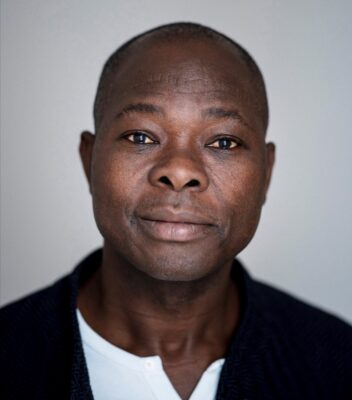
photo courtesy of The Hyatt Foundation
2022 Pritzker Architecture Prize
Diébédo Francis Kéré, architect, educator and social activist, has been selected as the 2022 Laureate of the Pritzker Architecture Prize, announced Tom Pritzker, Chairman of The Hyatt Foundation, which sponsors the award that is regarded internationally as architecture’s highest honor.
Mar 5, 2019
2019 Prize Winner
Arata Isozaki Receives the 2019 Pritzker Architecture Prize
Arata Isozaki, distinguished Japanese architect, city planner and theorist, has been selected as the 2019 Laureate of the Pritzker Architecture Prize, the award that is known internationally as architecture’s highest honor.
Pritzker Prize Architects : main page with current winner information
Location: Chicago, USA
Pritzker Architecture Prize – Past Winners
Pritzker Prize 2015 – Frei Otto selected as the 2015 Pritzker Architecture Prize
Ruta del Peregrino, Jalisco, Mexico – Alejandro Aravena (Elemental) Joint Project
Pritzker Architecture Prize Winner 2014
Shigeru Ban architect
A key building by this architect: Centre Pompidou-Metz, France:
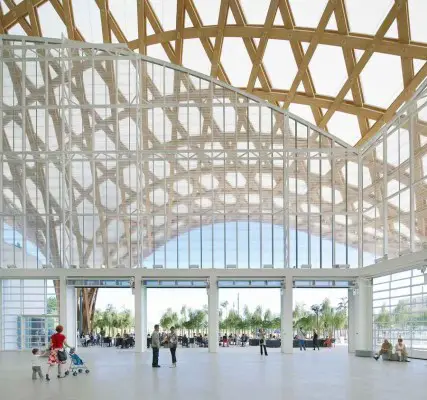
photo : Roland Halbe
Pritzker Architecture Prize Winner 2013
Toyo Ito Architect
Pritzker Architecture Prize Citation for 2013 – Toyo Ito
Pritzker Prize 2012 won by architect Wang Shu
Pritzker Prize 2012 winner : Wang Shu
Pritzker Prize 2011 won by architect Eduardo Souto de Moura
Pritzker Architecture Prize Laureate 2011 : Citation from the Jury + The Jury + Eduardo Souto de Moura information
Pritzker Prize 2010 winner : Eduardo Souto de Moura
Pritzker Prize 2010 won by architects SANAA
SANAA, architects
Pritzker Prize 2009 won by architect Peter Zumthor
Peter Zumthor
Zaha Hadid architect : Pritzker Architecture Prize Jury member
Pritzker Architecture Prize Laureate 2010 Citation + The Jury
Key Architecture Awards
World Architecture Festival Awards
AR Awards for Emerging Architecture
Comments / photos for the Pritzker Architecture Prize 2021 Winner – page welcome

